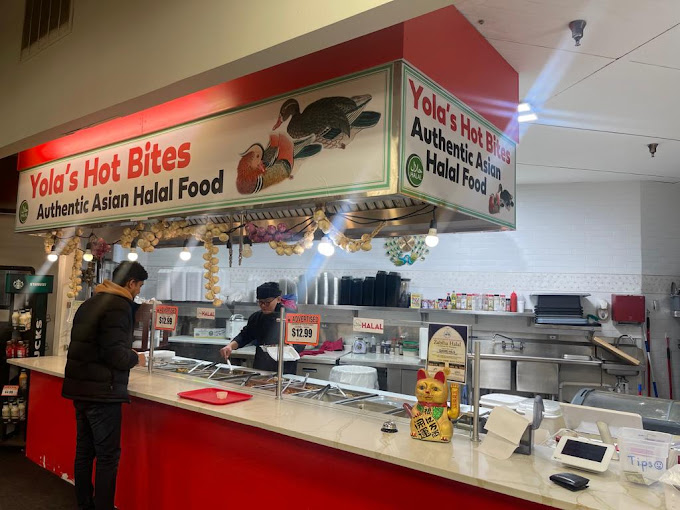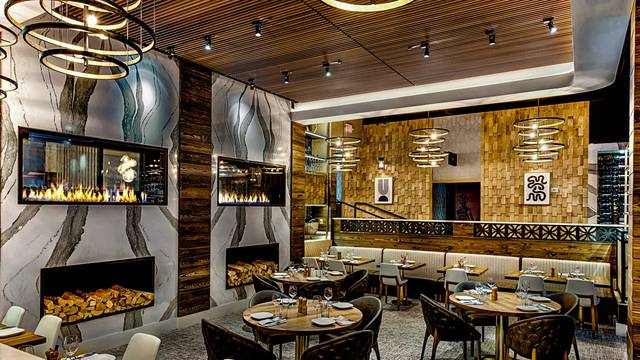Savor Genuine Eastern Cuisine With a Pan-Asian Twist for a Cooking Journey
Getting started on a culinary journey with authentic Eastern cuisine, boosted with a Pan-Asian twist, uses a special possibility to discover the rich tapestry of tastes that define the area's diverse cooking customs. As you contemplate these attracting recipes, consider the cultural narratives and historic influences that shape them, each bite supplying a tale waiting to be uncovered. asian restaurant isb.

Checking Out Pan-Asian Tastes
In the world of global gastronomy, Pan-Asian cuisine sticks out for its remarkable variety and the harmonious interaction of tastes from different Asian cultures. This cooking method celebrates the rich customs and distinct ingredients discovered throughout the continent, developing a tapestry of preferences that is both enjoyable and intriguing. Key to Pan-Asian cuisine is its capability to balance different tastes-- sweet, salty, spicy, and sour-- while highlighting the freshness and top quality of each component.
From the umami-rich soy sauce of Japan to the intense chili peppers of Thailand, Pan-Asian food uses a substantial combination of tastes. These components are often combined in inventive methods, boosting recipes with layers of complexity. For example, the use of aromatic natural herbs such as lemongrass and cilantro, usual in Vietnamese and Thai cuisine, adds a refreshing brightness to recipes, while the incorporation of coconut milk provides a luscious, rich appearance.
The focus on fresh fruit and vegetables and fragrant spices makes certain that each dish is not only a feast for the taste however also for the senses. Pan-Asian food invites restaurants to embark on a cooking journey, discovering the vast and differed landscapes of Eastern gastronomy with every bite.
Blend Dishes to Try
While Pan-Asian food is commemorated for its conventional tastes, the modern cooking landscape is increasingly welcoming combination recipes that blend these timeless aspects with impacts from other areas. This ingenious method not just honors the rich heritage of Asian culinary arts yet additionally presents novel taste experiences that interest contemporary tastes.
A prime instance of such a blend recipe is the Korean-Mexican taco, where marinaded bulgogi beef is covered in a warm tortilla, covered with kimchi and a zesty gochujang-infused salsa. This combination weds the bold, full-flavored tastes of Korea with the dynamic, fresh elements of Mexican cuisine. Likewise, sushi burritos have gotten popularity, amalgamating the fragile creativity of Japanese sushi with the hearty, hand-held comfort of a burrito, usually featuring combination components like tempura shrimp and avocado with a drizzle of wasabi mayo.
Another notable meal is Thai curry ramen, which infuses the luscious, fragrant seasonings of Thai curry right into the calming broth of conventional Japanese ramen, developing a harmonious mix that entices the senses. These combination meals expand past mere novelty; they represent a cooking discussion in between societies, urging exploration and advancement in the globe of Pan-Asian food.
Essential Active Ingredients and Spices
To really value Pan-Asian cuisine, one have to recognize the vital ingredients and seasonings that develop its foundation. This varied culinary style draws from an abundant tapestry of Asian practices, using an unified mix of appearances and tastes.
Aromatic aspects are pivotal, with ginger, garlic, and lemongrass being ubiquitous throughout various Pan-Asian dishes. These active ingredients give an aromatic base that improves the complexity of tastes. Flavors such as star anise, cardamom, and cinnamon introduce warmth and personality, resembling impacts from areas like China and India.

Food Preparation Techniques and Tips
Understanding the art of Pan-Asian food needs familiarity with its distinct food preparation techniques, each adding to the lively tapestry of tastes this cooking practice is celebrated for. Central to these approaches is the stir-fry, a rapid cooking technique that preserves the nutritional stability and brilliant shades of active ingredients. Utilizing a wok, the stir-fry technique permits for also warmth circulation, important for attaining the particular structure and taste equilibrium of Pan-Asian meals.
One more essential technique is steaming, especially common in Chinese cuisine. This gentle method preserves the all-natural tastes and nutrients of ingredients, making it perfect for fish and shellfish and veggies. Dumplings, a cherished staple, typically take advantage of steaming, resulting in soft, delicious structures.
Barbecuing, additionally essential, presents great smoky midsts to meals such as Oriental bulgogi or Japanese yakitori (best asian restaurant Islamabad). This strategy often involves marinating active ingredients, enabling flavors to penetrate deeply before food preparation over an open fire or warmer
Last but not least, understanding the art of stabilizing tastes-- sweet, sour, salty, bitter, and umami-- is crucial. Properly layering these elements can boost a recipe from normal to remarkable, providing a facility and satisfying cooking experience that personifies the essence of Pan-Asian food.
Dining Experiences Worldwide
Around the world, Pan-Asian food uses an unparalleled eating experience, celebrated for its abundant tapestry of flavors and vivid discussions. This culinary sensation has transcended cultural boundaries, recording the hearts and tastes of food lovers worldwide. In cosmopolitan cities like New York, London, and Sydney, Pan-Asian dining establishments serve as melting pots where culinary customs from Thailand, Japan, China, and beyond converge, supplying restaurants with a diverse mix of recipes that highlight the area's diversity.
The worldwide allure of Pan-Asian cuisine lies in its capability to provide both credibility and technology. Cooks masterfully wed traditional components such as lemongrass, soy sauce, and miso with modern strategies, causing meals that are both refreshingly new and familiar. This fusion allows diners to start a culinary journey that respects heritage while accepting modernity.
Moreover, dining experiences are elevated through thoughtfully created settings that reflect the ethos of Pan-Asian looks. From minimalist Japanese-inspired interiors to lively Thai-themed spaces, each dining establishment provides a distinct atmosphere that matches the cooking offerings. As a result, patrons are not merely eating a dish however partaking in a wikipedia reference cultural experience, making happy garden Pan-Asian dining a really worldwide phenomenon.
Conclusion
The expedition of Pan-Asian cuisine provides a profound understanding of the elaborate interplay of flavors and culinary traditions across Asia. By accepting fusion dishes such as Thai curry ramen and sushi burritos, the culinary journey not only highlights the versatility of traditional components yet likewise showcases cutting-edge contemporary strategies. This gastronomic experience, enriched by cooking approaches and essential flavors, supplies an unique chance to value the multiculturalism and cooking artistry that specify Pan-Asian food on an international range.
Getting started on a cooking trip via genuine Oriental cuisine, boosted with a Pan-Asian spin, supplies an unique opportunity to check out the abundant tapestry of tastes that specify the area's varied culinary traditions.In the world of international gastronomy, Pan-Asian cuisine stands out for its amazing variety and the unified interplay of tastes from different Asian societies. Key to Pan-Asian cuisine is its ability to stabilize contrasting flavors-- wonderful, salted, spicy, and sour-- while highlighting the freshness and top quality of each component.

Comments on “Pan Asian Dining Islamabad: Appreciate Genuine Asian Recipes”